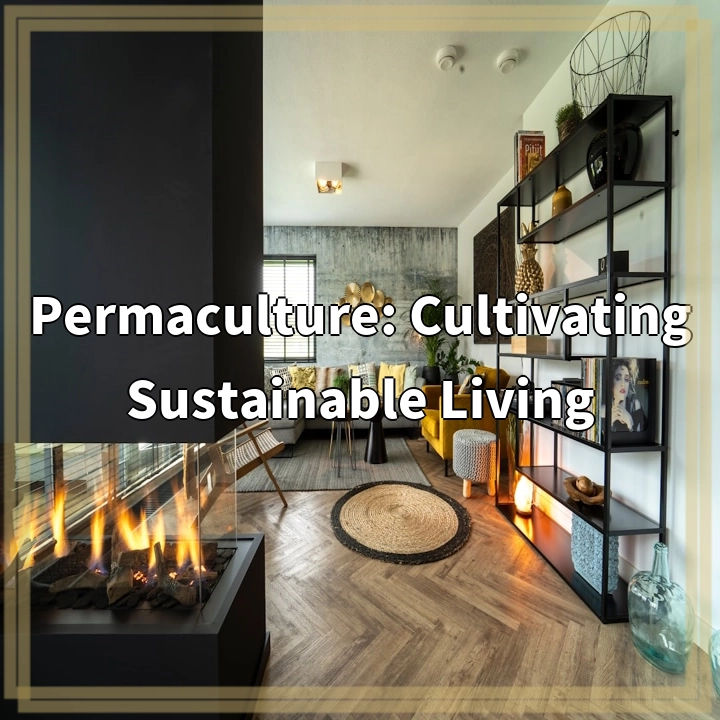
What is Permaculture?
Permaculture is a sustainable design philosophy and practice that aims to create harmonious and regenerative systems within the natural environment. It encompasses a holistic approach to living in balance with nature, combining principles from agriculture, ecology, and design.
Real-World Problems
1. Loss of Biodiversity
The loss of biodiversity is a significant challenge faced by our planet today. Conventional agricultural practices often lead to the destruction of natural habitats, contributing to the decline of various plant and animal species. Permaculture provides solutions by emphasizing the creation of diverse ecosystems that support a wide range of species.
Example:
In permaculture gardens or farms, diverse plant species are grown together, providing food, shelter, and habitat for insects, birds, and other wildlife. By promoting biodiversity, permaculture helps maintain the balance of ecosystems and supports pollination and natural pest control.
2. Soil Degradation
Industrial agriculture practices, such as excessive tillage and the use of synthetic chemicals, often result in soil degradation. This leads to a loss of fertile topsoil, decreased water retention capacity, and reduced nutrient availability for plants. Permaculture offers solutions by focusing on building and regenerating healthy soil ecosystems.
Example:
Permaculturists use techniques like composting, mulching, cover cropping, and integrated animal systems to improve soil health. These practices enhance organic matter content, increase soil fertility, and encourage beneficial soil organisms, ultimately leading to improved soil structure and nutrient cycling.
3. Water Scarcity
Rising global temperatures and unsustainable water management practices have led to water scarcity in various regions. Conventional agriculture, with its heavy reliance on irrigation, exacerbates this issue. Permaculture employs strategies to conserve and maximize the use of water resources.
Example:
Permaculture designs incorporate techniques like rainwater harvesting, contouring land to manage water flow, and planting water-retaining vegetation to minimize water runoff. By implementing these practices, permaculture systems reduce water consumption and increase the resilience of landscapes to drought conditions.
4. Food Insecurity
Globally, millions of people lack access to sufficient and nutritious food. Conventional agriculture often prioritizes high-yield mono-cropping, leading to a lack of dietary diversity and vulnerability to crop failure. Permaculture promotes food security by encouraging local and sustainable food production.
Example:
Permaculture systems prioritize the cultivation of a diverse range of edible plants, including fruits, vegetables, herbs, and nuts, both in backyard gardens and larger-scale farms. By incorporating food forests, companion planting, and rotational cropping, permaculture provides a sustainable and resilient source of food for communities.
5. Climate Change
Climate change is one of the most pressing global challenges of our time. Conventional agriculture practices, with their reliance on fossil fuels, chemical inputs, and deforestation, contribute significantly to greenhouse gas emissions. Permaculture offers nature-based solutions to mitigate and adapt to climate change.
Example:
Permaculture systems prioritize organic and regenerative practices that reduce carbon emissions and build carbon-rich soils. Utilizing agroforestry techniques, incorporating perennials, and practicing regenerative land management play vital roles in sequestering carbon and enhancing ecosystem resilience against climate change impacts.
By addressing these real-world problems through the lens of permaculture, we can foster more sustainable and resilient communities that live in harmony with the natural world.

Solutions to Real-World Problems
1. Loss of Biodiversity
Permaculture promotes biodiversity by creating diverse ecosystems that support a wide range of species.
2. Soil Degradation
Permaculture focuses on building healthy soil ecosystems through composting, mulching, cover cropping, and integrated animal systems.
3. Water Scarcity
Permaculture conserves and maximizes the use of water resources through techniques like rainwater harvesting, contouring land, and planting water-retaining vegetation.
4. Food Insecurity
Permaculture promotes food security by encouraging local and sustainable food production through diverse edible plant cultivation and companion planting.
5. Climate Change
Permaculture offers nature-based solutions to mitigate and adapt to climate change through organic and regenerative practices, agroforestry, and carbon sequestration.
By implementing permaculture practices, we can address these real-world problems and create more sustainable and resilient communities.















